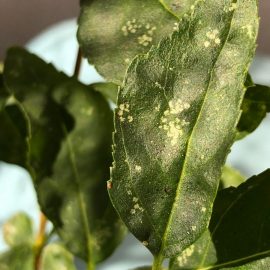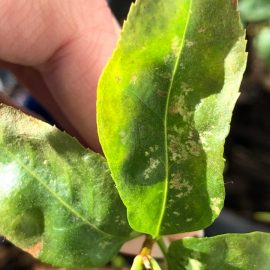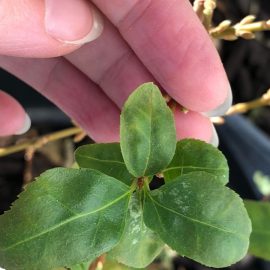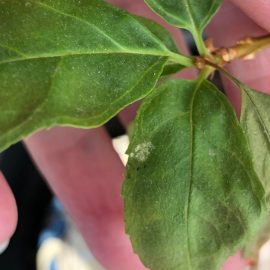Forsythia, planting guide and care work
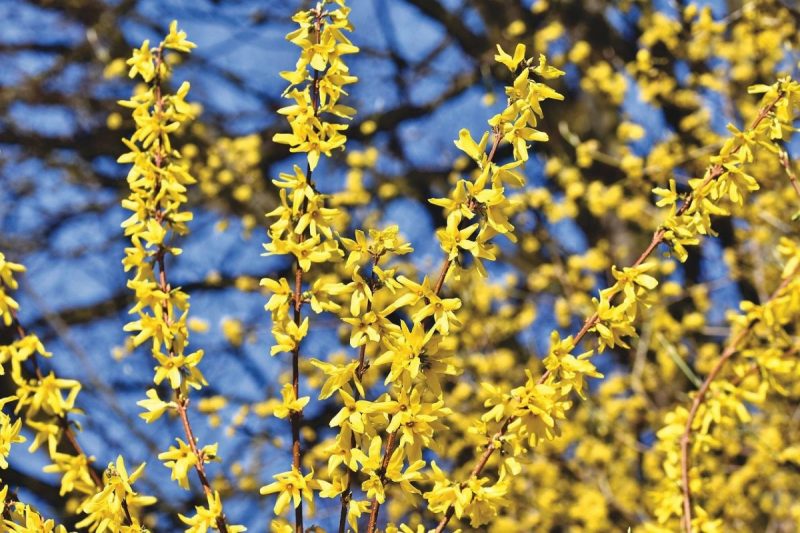
Forsythia is a genus of flowering plants in the Oleaceae family, native to East Asia and Southeast Europe. They are deciduous shrubs, with a height between 1-3 m. The tendrils have rough, gray-brown bark. The leaves are simple, oppositely arranged. They are deciduous, lanceolate, with a slightly serrated edge. They are green and become copper in autumn. Forsythia blooms in early spring before the leaves develop. The flowers are yellow, with a diameter of 3 cm. It is a decorative shrub with flowers, planted alone or in groups, in parks and gardens. It is also used in hedges.
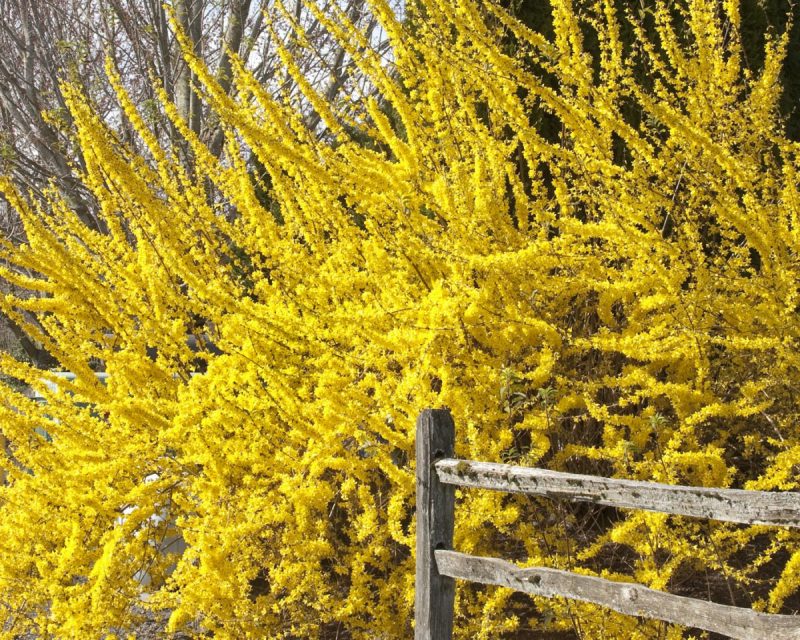
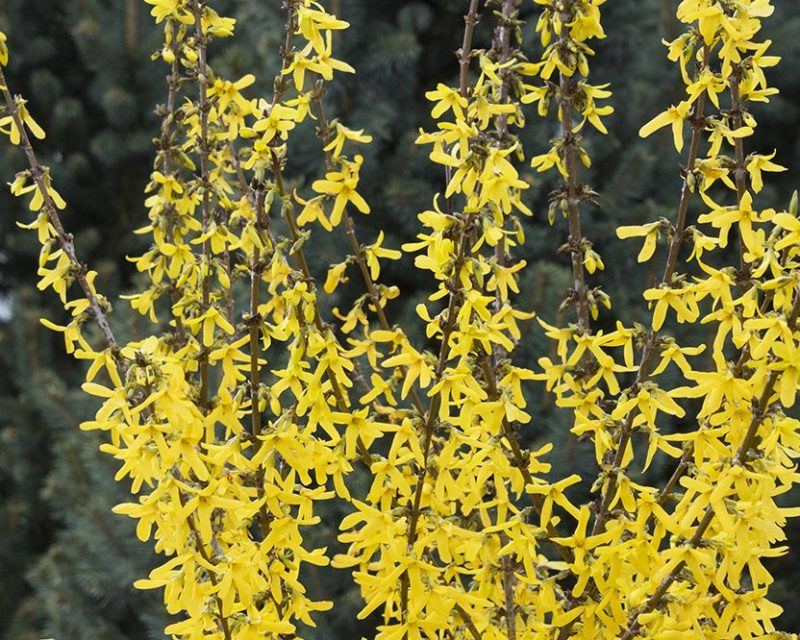
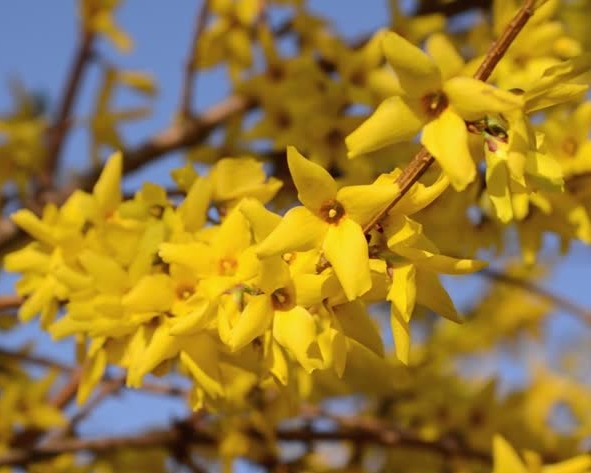
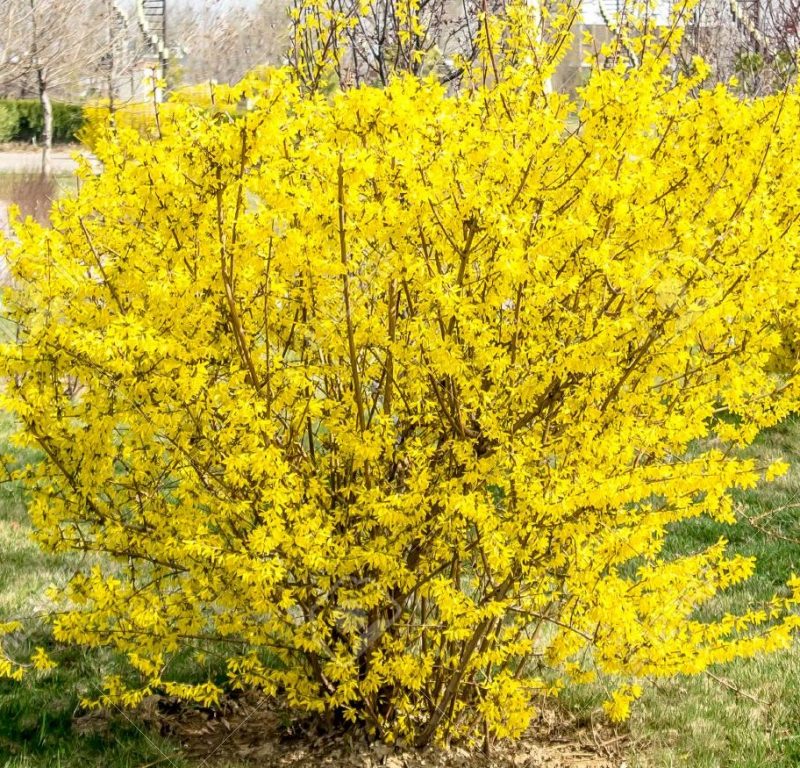
Forsythia – hybrids and cultivars
The genus includes about 11 species, from which numerous hybrids have been obtained. One of the most common is Forsythia x intermedia, which includes the following cultivars:
‘Lynwood’ – with light yellow flowers, arranged evenly on the tendrils.
‘Spectabilis’ – it is more vigorous and has a higher resistance to frost.
‘Spring Glory’ – the flowers are abundant, intense yellow.
‘Karl Sax’ – it forms a thick bush and has increased resistance to frost.
‘Fiesta’ – the leaves have green edges and a light-colored center.
‘Evergold’ – the leaves remain yellow throughout the vegetative growth period.
Environmental conditions
Light. It prefers places with direct sunlight for optimal growth and abundant flowering, but it also tolerates partial shade.
Temperature. It has no specific temperature requirements, and in general, it is a frost-resistant hybrid.
Soil. It adapts easily to most soil types.
Watering
It does not require regular watering, because it is a drought-resistant plant.
Fertilization
During the growing and flowering period, a fertilizer for decorative shrubs can be administered.
Recommended products
-
You can find products on a different store
Change Store -
You can find products on a different store
Change Store -
You can find products on a different store
Change Store -
You can find products on a different store
Change Store -
You can find products on a different store
Change Store -
You can find products on a different store
Change Store -
You can find products on a different store
Change Store -
You can find products on a different store
Change Store -
You can find products on a different store
Change Store -
You can find products on a different store
Change Store -
You can find products on a different store
Change Store -
You can find products on a different store
Change Store -
You can find products on a different store
Change Store -
You can find products on a different store
Change Store -
You can find products on a different store
Change Store -
You can find products on a different store
Change Store -
You can find products on a different store
Change Store -
You can find products on a different store
Change Store -
You can find products on a different store
Change Store -
You can find products on a different store
Change Store -
You can find products on a different store
Change Store -
You can find products on a different store
Change Store -
You can find products on a different store
Change Store -
You can find products on a different store
Change Store
Pruning
Immediately after flowering, cleaning and shape correction cuts should be done.
Recommended products
-
You can find products on a different store
Change Store -
You can find products on a different store
Change Store -
You can find products on a different store
Change Store -
You can find products on a different store
Change Store -
You can find products on a different store
Change Store -
You can find products on a different store
Change Store -
You can find products on a different store
Change Store -
You can find products on a different store
Change Store -
You can find products on a different store
Change Store -
You can find products on a different store
Change Store -
You can find products on a different store
Change Store -
You can find products on a different store
Change Store -
You can find products on a different store
Change Store -
You can find products on a different store
Change Store -
You can find products on a different store
Change Store -
You can find products on a different store
Change Store -
You can find products on a different store
Change Store -
You can find products on a different store
Change Store -
You can find products on a different store
Change Store -
You can find products on a different store
Change Store -
You can find products on a different store
Change Store -
You can find products on a different store
Change Store -
You can find products on a different store
Change Store -
You can find products on a different store
Change Store
Pests
The most common pest of Forsythia is the citrus flatid planthopper.
Recommended products
-
You can find products on a different store
Change Store -
You can find products on a different store
Change Store -
You can find products on a different store
Change Store -
You can find products on a different store
Change Store -
You can find products on a different store
Change Store -
You can find products on a different store
Change Store -
You can find products on a different store
Change Store -
You can find products on a different store
Change Store -
You can find products on a different store
Change Store -
You can find products on a different store
Change Store -
You can find products on a different store
Change Store -
You can find products on a different store
Change Store -
You can find products on a different store
Change Store -
You can find products on a different store
Change Store -
You can find products on a different store
Change Store -
You can find products on a different store
Change Store -
You can find products on a different store
Change Store -
You can find products on a different store
Change Store -
You can find products on a different store
Change Store -
You can find products on a different store
Change Store -
You can find products on a different store
Change Store -
You can find products on a different store
Change Store -
You can find products on a different store
Change Store -
You can find products on a different store
Change Store
Planting
It can be done in spring or autumn, during the dormancy period, at temperatures above 5° C, if the soil is not frozen and there is no danger of frost. Make sure you buy the planting material from authorized nurseries.
Propagation
Forsythia can be multiplied through cuttings or layering.
- cuttings are harvested from 1-year-old shoots, which must be rooted in early spring, in a special substrate.
- in the case of layering, the mound technique is preferred.
Recommended products
-
You can find products on a different store
Change Store -
You can find products on a different store
Change Store -
You can find products on a different store
Change Store -
You can find products on a different store
Change Store -
You can find products on a different store
Change Store -
You can find products on a different store
Change Store -
You can find products on a different store
Change Store -
You can find products on a different store
Change Store -
You can find products on a different store
Change Store -
You can find products on a different store
Change Store -
You can find products on a different store
Change Store -
You can find products on a different store
Change Store -
You can find products on a different store
Change Store -
You can find products on a different store
Change Store -
You can find products on a different store
Change Store -
You can find products on a different store
Change Store -
You can find products on a different store
Change Store -
You can find products on a different store
Change Store -
You can find products on a different store
Change Store -
You can find products on a different store
Change Store -
You can find products on a different store
Change Store -
You can find products on a different store
Change Store -
You can find products on a different store
Change Store -
You can find products on a different store
Change Store
In addition:
- it is one of the first outdoor decorative species to bloom in spring.
- it is a plant that can withstand the polluted atmosphere of urban environments.














































































































































































































































































































































































































































